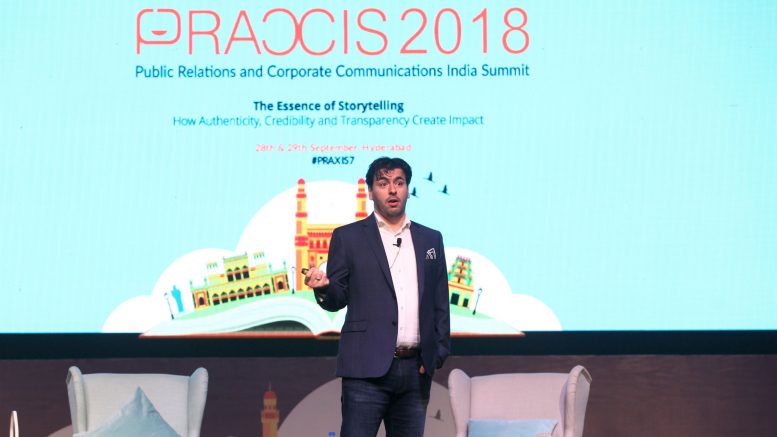What do stories do? They connect, engage us, and inspire us. Stories help us get attention, make people believe in us, and also make a connect for the brand. This was Sam Ruchlewicz, VP – Digital Strategy & Data Analysis, Warschawski talking about – Quantifying the Contribution of Storytelling to the Bottomline.
People like stories. Stories are more than just entertainment. From an evolutionary standpoint, they are essential for communicating knowledge, shaping attitudes, creating social norms and fostering social cooperation – in short, most of the things that make us human. In fact, the human mind is wired to divert attention and precious resources to character-centric narratives – which, in turn, spurns off biochemical reactions that ultimately result in our being more inclined to take actions.
Referring to a research from MIT which analysed over thousand different works of fiction from the Project Gutenberg library using sentiment analysis, he narrated how it was found that nearly all of them followed one of six emotional arcs or trajectories – and almost all of them follow a similar narrative pattern.
What do stories do? What is the point of telling stories? How do they help us capture our prospect’s attention, captivate them with our messages and convert them into loyal, paying customers?
Stories follow a pattern. Stories allow us to forge a human, personal connection in an increasingly digital, impersonal world. They inform and educate; they inspire action – providing a perfect opportunity to drive action. Stories are memorable experiences – they bring us closer to brands. Your challenge is to determine what stories do this best.
Biologically, humans are wired to detect patterns. Stories play into that need, constantly generating and releasing tension in a (fairly) predictable way. Referring to the movie Inception, we saw how an idea implanted in a person’s mind goes on to shape their reality. “Well, the same thing happens with stories. We remember them. We internalise them. And we use them as bases for action in the future – consciously or not,” he pointed out. “Stories, then, engage the entire brain – which is both memorable and emotive,” he added.
Why are we here? Since stories are so wonderful and great, so ingrained in our history and our biology, then why are we here? Clearly they are effective. But it doesn’t matter what we know. It matters what we can prove.
But what’s the point? It doesn’t matter what you know, but what you can prove. “We all get inspired to tell stories with shiny pictures and we all are happy. Then someone asks questions – how good is your story? That’s when we think how in the world did we get here? How are you going to get your budgets approved?” he questioned. People want to quantify budgets. We look at follower counts, tweets and it feels good.
To put it simply: stories are a better way of earning the attention of your target audience. So, measuring their impact is as simple as measuring the impact of every other ad. Through thorough calculation, it should translate to the bottom-line outcomes. And, then the ROI is to be calculated – to assess the success.
What roles should stories play in the marketing strategy? What does success look like? What story should you tell? How do you prove what’s right? The ‘big’ problem – you may have no idea; when there’s a big disconnect in marketing – that’s the problem. You don’t connect and bad things happen.
Significantly, storytelling is a business activity. Quantifying the whole process, he explained how there are very real costs associated with doing it – including content creation/curation, promotion and evaluation. Storytelling should make a measurable contribution to your organisation’s bottom-line goals.
Everyone loves to be “popular” – and marketers are no different. Quantifying outcomes – counting impressions, site visits, followers, retweets, etc. Whether its page “likes” or followers. “We love to see our stories shared, read & heard. The problem is that being popular doesn’t pay the bills. And it doesn’t justify budgets,” he noted. Every marketer’s dream is to develop the ability to quantify the impact they are having on the company’s bottom line (and in doing so, justify their continued existence). The Airbnb and Nike stories showed how the economic value was created.
Signing off, he left the audience on a thoughtful note, raising the question – How many of your stories are profitable?






Be the first to comment on "Storytelling should make a measurable contribution to your organisation’s bottomline"